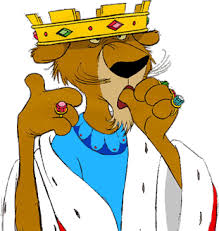Posted by Mark
27 September 2019Jack Pettitt, an Exeter graduate and secondary school history teacher, has spent his summer filming a series of online videos to help his students learn about the Normans. To make this series look as professional as possible, Jack not only filmed on location at historical sites, but recorded interviews with several academics, including myself and others from the CMS. And after Jack had finished talking to me about the Norman Church, I took the opportunity to ask him a few questions about medieval history and the current secondary school curriculum…
What aspects of medieval history do you teach?
‘In my school, we go from the decline of the Roman Empire to the migration of tribes into Britain, so the Jutes, the Saxons, and the Angles. And then we look at Anglo-Saxon England itself. We cover very basic topics, such as what it was like to live in Anglo-Saxon England, and look at VIPs like Alfred the Great, Offa, etc. Then we do the Norman Conquest in quite a lot of depth. We go from the invasion itself – we cover all three battles in 1066 – all the way through to how William secured control. Then we move on to medieval England. First we take a bottom-up approach and look at things like town life, village life, and the Black Death. Next we do more top-down history and look at medieval kingship. We focus on King John, Magna Carta, and the Peasants’ Revolt.’
How do students respond to medieval history in comparison to modern history?
‘In most lessons I hear “when are we doing WWI?” or “when are we doing WWII?” The students have this perception that modern world wars are the most important and the most engaging and fun. And I think that partly comes from what they do in primary school. But, also, I suppose because it wasn’t that long ago. I teach in a boys’ school and a lot of boys have grown up with stories from their grandparents about WWII and Nazi Germany so it’s more relatable. It’s close. It’s the same with the Cold War when I teach it to my GCSE students. They’ve got an emotional or cultural connection to some of the stuff, like the Cuban Missile Crisis or the Soviet Invasion of Afghanistan – and you can see it. Whereas when you teach about the Anglo-Saxons or Normans, it’s so far away it’s another world.’
So how do you make medieval history engaging?
‘My ethos is that I love the subject and that’s going to come through, hopefully, in my teaching. But sometimes for the average person, you need to make a link. Teaching history is about finding the relevance for your students. For example, showing how the Magna Carta is relevant today, how it was a step towards a more democratic society.
I also try to bring topics to life and I think that’s very, very important. You’re not meant to have a bias when teaching, but some of the stuff I find really dry, like the farming calendar – I couldn’t think of anything drier! In contrast, my Black Death scheme of work runs over four lessons: I turn the whole classroom into a medieval apothecary and I wear a lab coat and look at symptoms and cures.
 I also teach every lesson to an inquiry question, which is grounded in historical rigour. For example, my King John lesson asks if Disney’s representation of King John is fair. So we look at how Disney portrayed him in Robin Hood and then we look at what historians, such as Marc Morris and Stephen Church, have said. I try to ground my lessons with the work of historians. And it makes it fun, doesn’t it?
I also teach every lesson to an inquiry question, which is grounded in historical rigour. For example, my King John lesson asks if Disney’s representation of King John is fair. So we look at how Disney portrayed him in Robin Hood and then we look at what historians, such as Marc Morris and Stephen Church, have said. I try to ground my lessons with the work of historians. And it makes it fun, doesn’t it?
Finally, why are you doing the video series?
‘This is a crazy idea I had in January. I thought wouldn’t it be cool if I could teach a lesson and the kids could see me, their teacher, doing history in the field? How inspiring would that be! They would love it! And it makes use of current digital technology. Plus, not only will it show the kids that their teacher is passionate about the topic, but it will be a great teaching aid for others.’
Helen Birkett